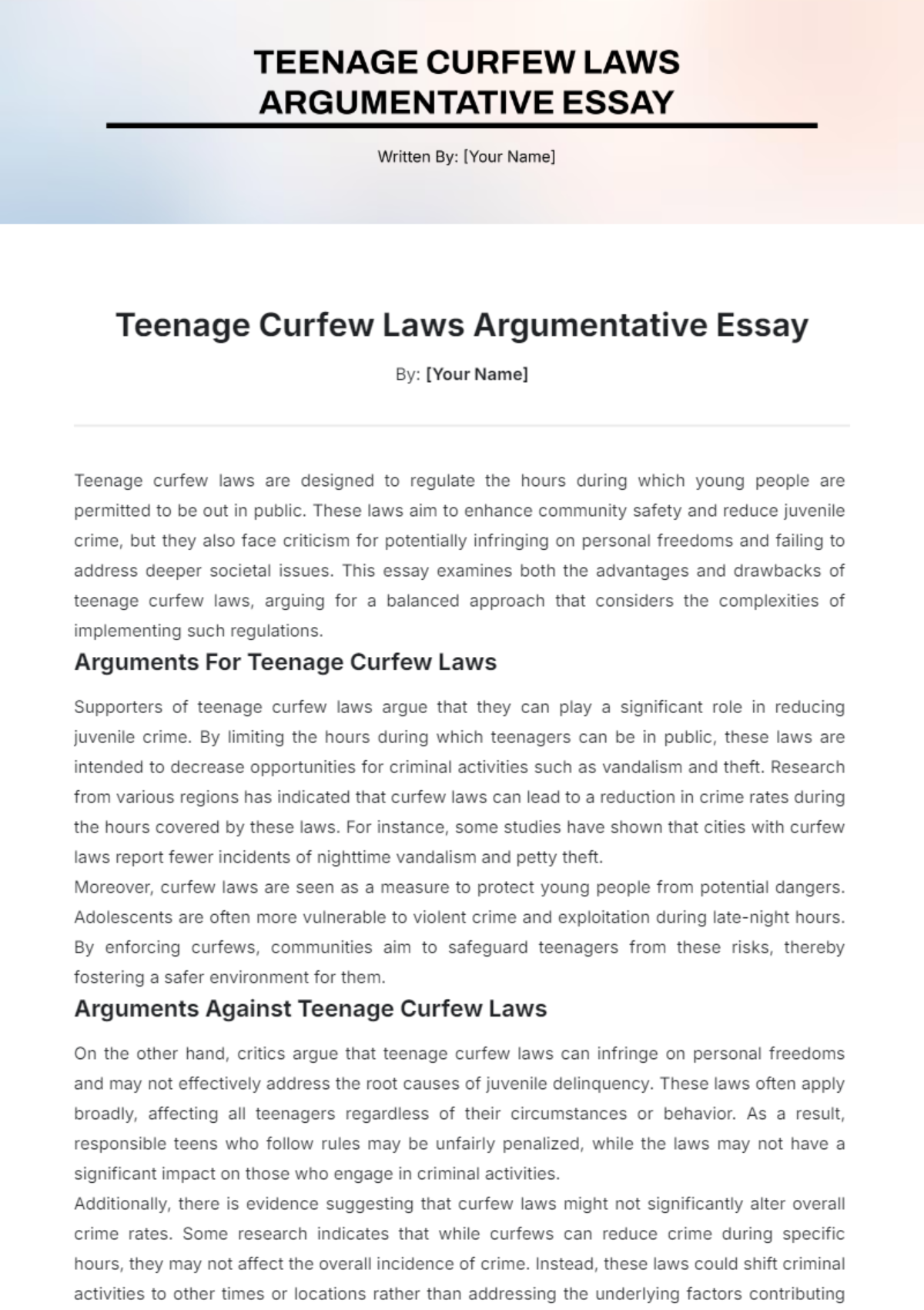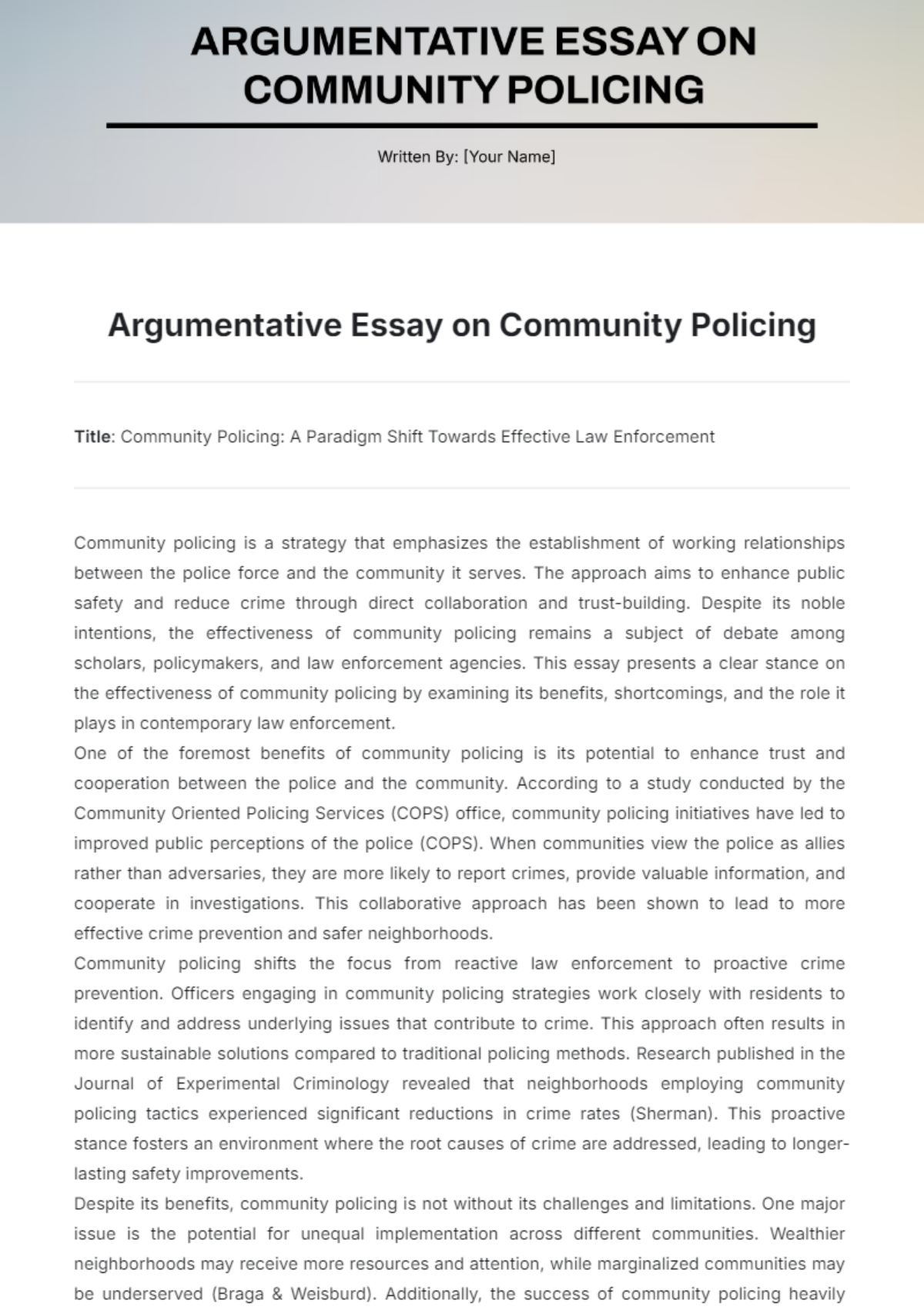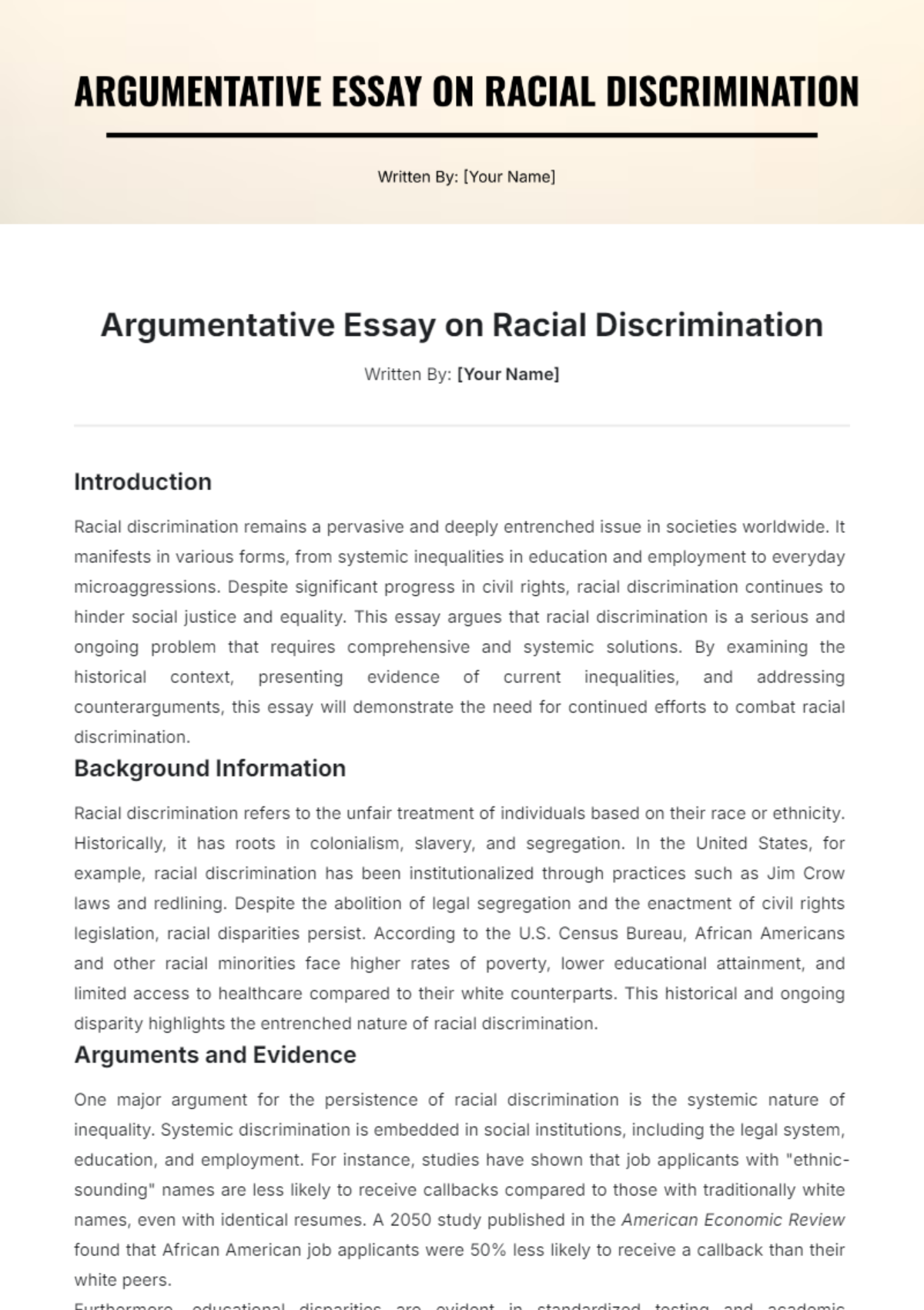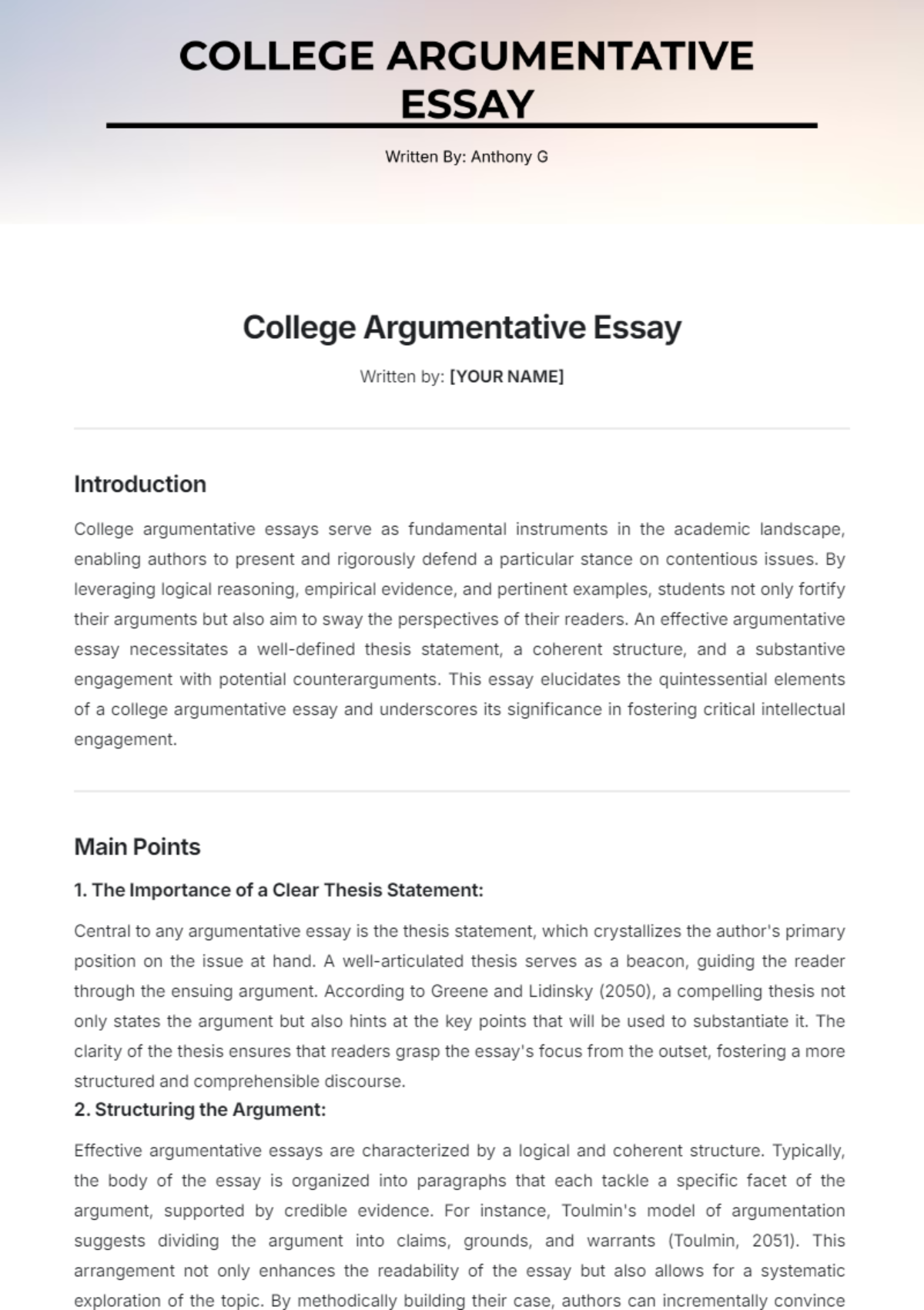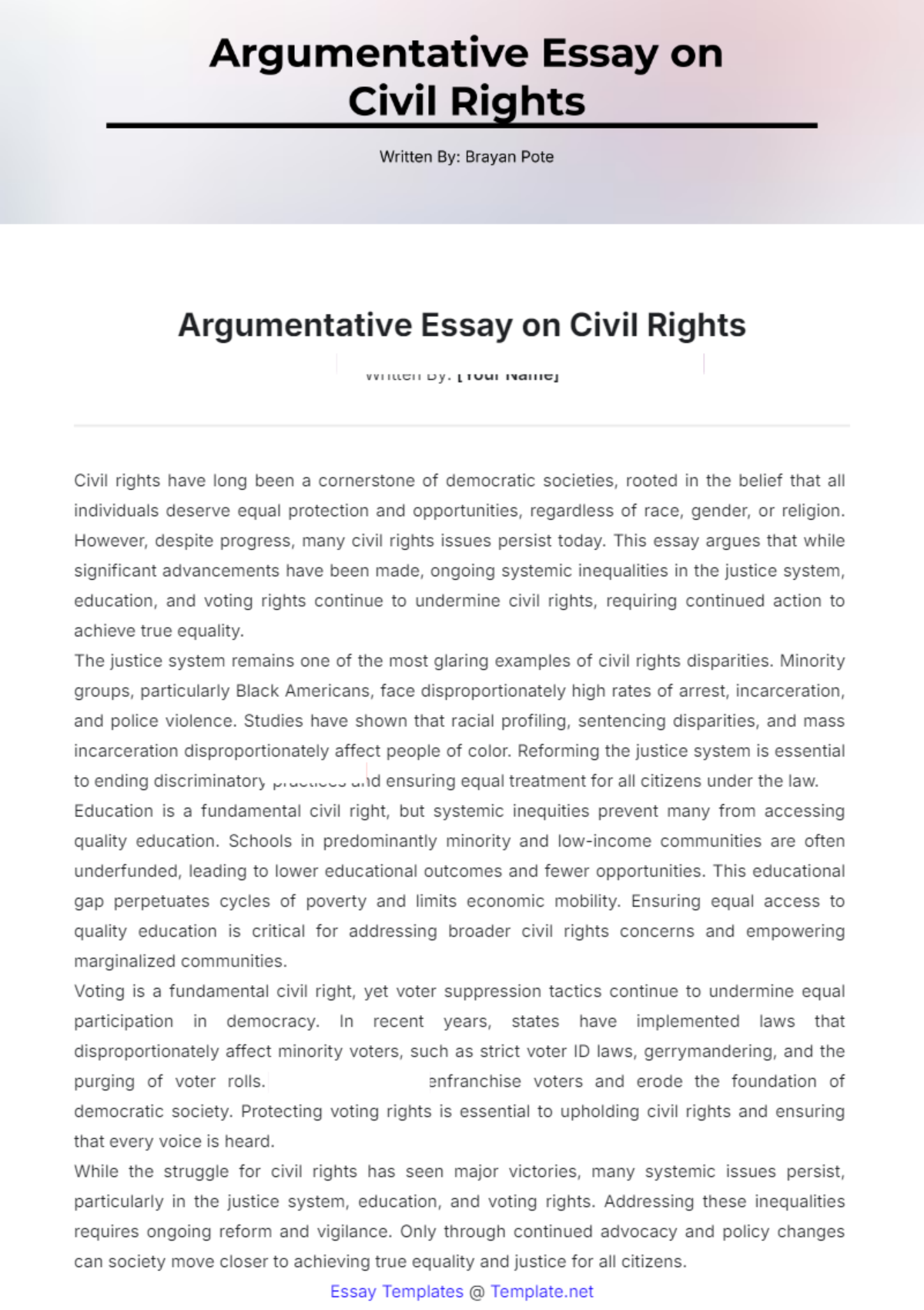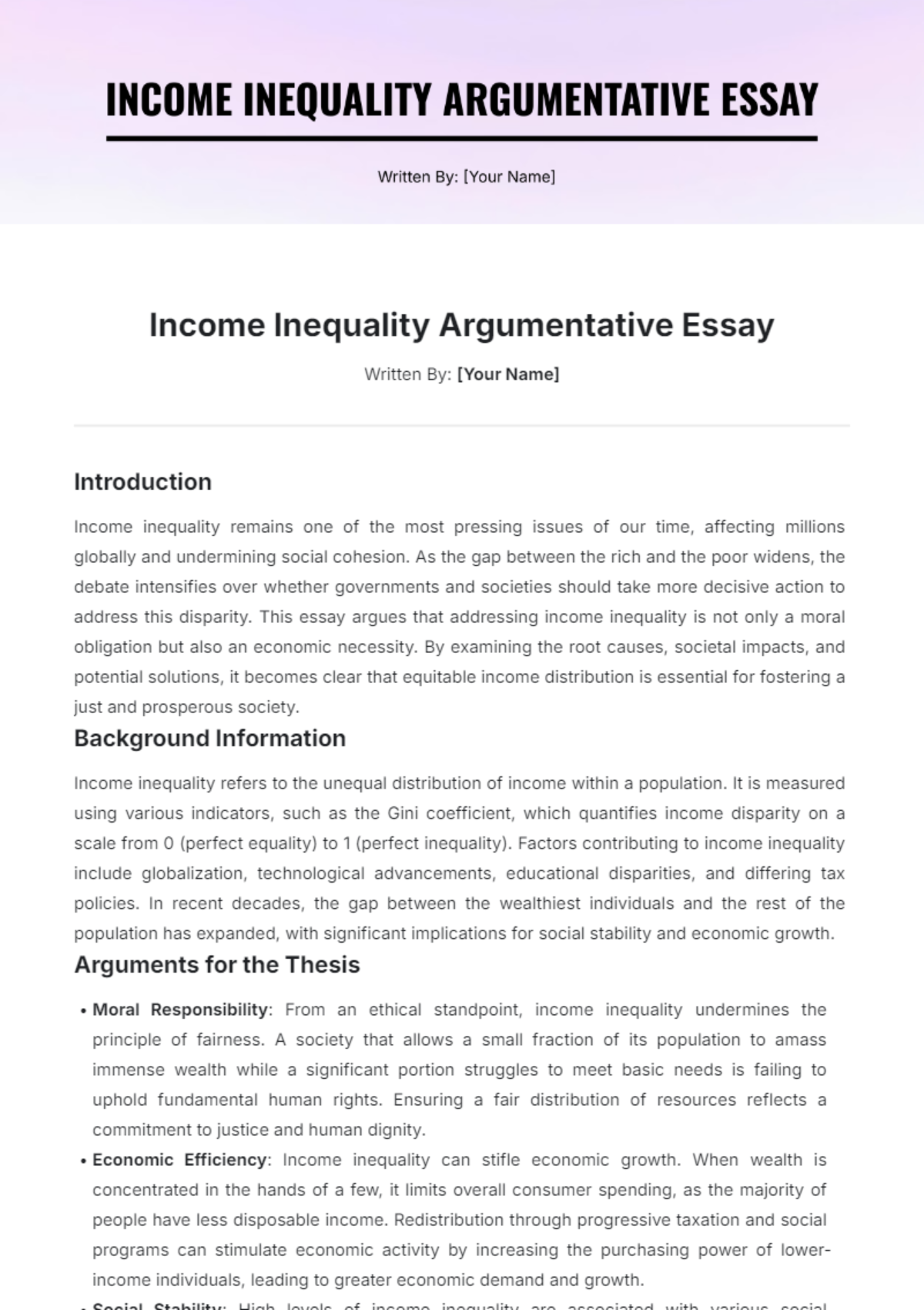Customizable Argumentative Essay
Introduction
Hook: Begin with a compelling hook that captures attention—this could be a provocative question, a surprising fact, or a relevant anecdote.
Background Information: Provide the necessary context to help the reader understand the issue. Briefly explain why the topic is significant and relevant.
Thesis Statement: State your central argument clearly and assertively. Outline the main points that will be discussed to support this thesis.
Body Paragraph 1: First Main Point
Topic Sentence: Introduce the first key argument or point that supports your thesis. Ensure it is clear and directly related to the thesis statement.
Evidence/Examples: Present robust evidence to substantiate this point. This might include statistical data, expert opinions, research findings, or illustrative examples.
Explanation: Analyze how this evidence supports your argument. Explain its relevance and how it strengthens your position.
Counterargument (optional): Address a potential counterargument related to this point. Provide a rebuttal to demonstrate why your argument still holds.
Body Paragraph 2: Second Main Point
Topic Sentence: Present the second key argument or point in support of your thesis. Ensure it is distinct from the first point yet complementary.
Evidence/Examples: Offer concrete evidence or examples that support this argument. This could include case studies, comparative analysis, or documented facts.
Explanation: Discuss how this evidence reinforces your argument. Highlight its significance in the context of your overall thesis.
Counterargument (optional): Consider another counterargument related to this point and provide a counter-rebuttal to strengthen your position.
Body Paragraph 3: Third Main Point
Topic Sentence: Introduce the third significant point supporting your thesis. This should add further depth and perspective to your argument.
Evidence/Examples: Provide detailed evidence or examples relevant to this point. Ensure they are credible and pertinent to your argument.
Explanation: Clarify how this evidence supports your argument and ties back to your thesis. Discuss its broader implications if relevant.
Counterargument (optional): Address any additional counterarguments associated with this point and offer a counter-rebuttal to reinforce your stance.
Conclusion
Restate Thesis: Freshly reaffirm your thesis statement, summarizing the key arguments you have made.
Summary of Main Points: Concise recap of the main points discussed in the body paragraphs. Highlight how they collectively support your thesis.
Final Thoughts: End with a strong closing statement. This could be a call to action, a reflection on the broader significance of the argument, or a suggestion for future research or consideration.
















